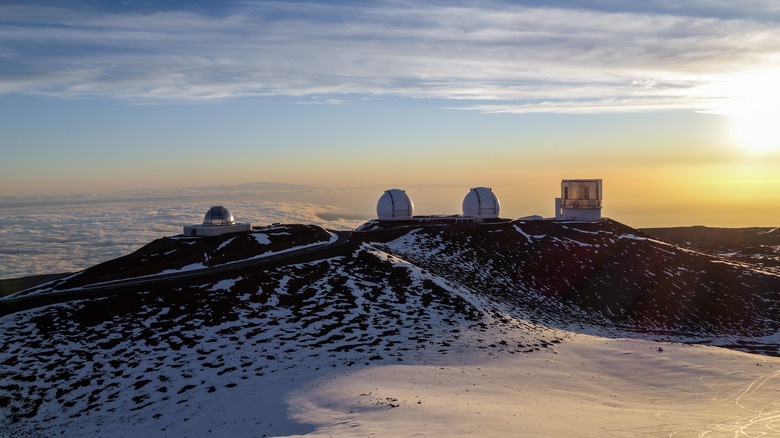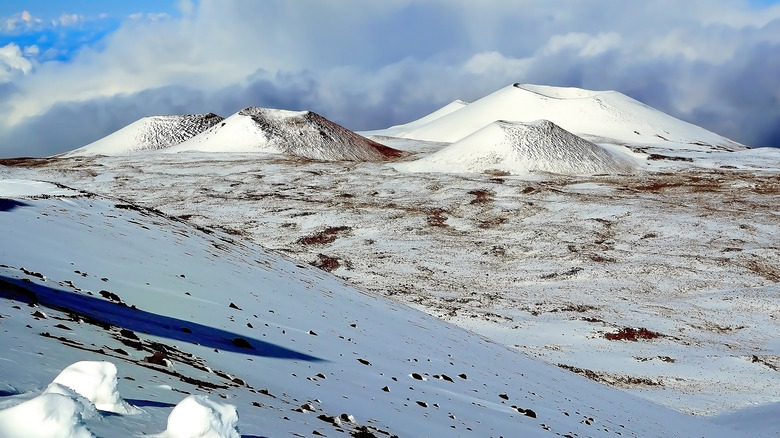Hawaii Does Get Snow. Here's Where
The popular image of Hawaii is that of a warm tropical paradise where the beaches are clogged with tourists hoping to escape the weather of their respective states or countries, which for decades has led to tourism becoming the state's biggest industry. For that reason, it can come as a surprise to visitors when, depending on when and where they find themselves in the state, they are inexplicably greeted by snowfall. In parts of the state such weather can actually be expected throughout the winter months (via World Atlas).
In fact, according to Weather, the only U.S. state to be untouched by snow in January 2021 was Florida. On Hawaii's Mauna Loa — the world's largest active volcano — there have counterintuitively even been severe blizzard warnings (via CNN). During the first week of December, the only other state which needed to issue such warnings was the more understandable Alaska (via Wood TV).
Hawaii's snowfall is expanding its range
Snowfall and blizzards in Hawaii only materialize at its highest mountain and volcanic peaks. Mauna Kea (pictured above) and Haleakala, the state's two other prominent volcanoes, reach heights of over 10,000 to 13,000 feet and as such are the two other locations where Hawaiian snow usually appears (via Does It Snow In). Those who attempt to make the difficult trek up toward their peaks however can expect to face extremely low visibility and winds that exceed 100 mph (via Weatherboy).
In the past, snow has not carried far beyond these three points, rendering the average beachgoer unlikely to be affected. Yet as recently as 2019, a Maui state park was covered in snow despite having an elevation of only 6,200 feet, meaning that spending winter in Hawaii may become be an experience much closer to home for many tourists (via Travel and Leisure).

